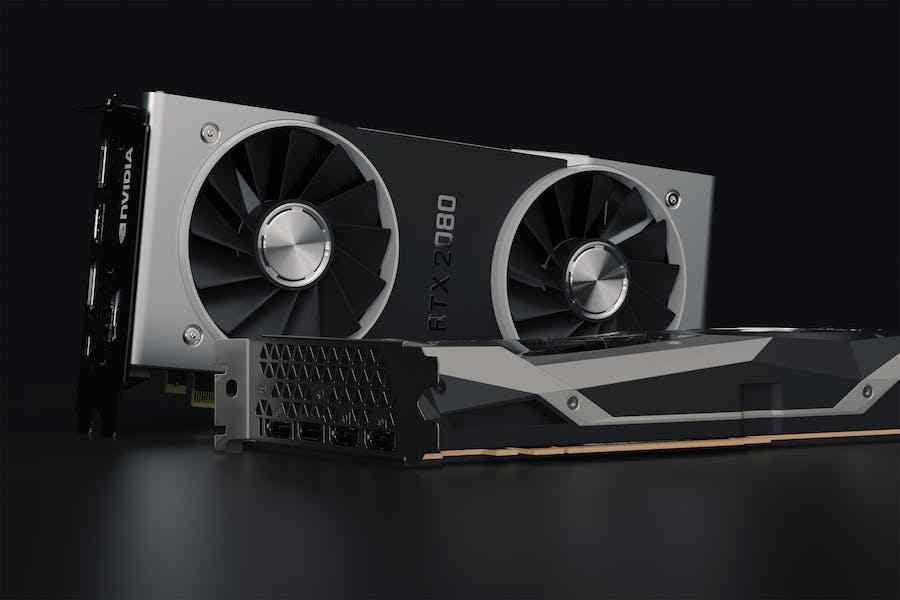As the heartbeat of any gaming or graphics-intensive computing system, the Graphics Processing Unit (GPU) plays a pivotal role in rendering stunning visuals and delivering optimal performance. However, if you’ve ever encountered a situation where your GPU fans are mysteriously silent, it can be a cause for concern. The fans on your GPU are designed to keep it cool and prevent overheating, and when they’re not spinning as they should, it can lead to potential hardware damage and decreased performance. In this comprehensive guide, we’ll delve into the various reasons why your GPU fans might not be spinning and provide you with step-by-step troubleshooting solutions to get your graphics card back in action. Whether you’re a seasoned PC enthusiast or a casual gamer, understanding and addressing this issue is essential for maintaining the health and longevity of your GPU.
Why are my GPU fans not spinning?
Your GPU fans not spinning can be due to several reasons. Firstly, check for loose or damaged fan cables, which may have become disconnected. Secondly, ensure your GPU isn’t overheating, as some GPUs have passive cooling modes when not under load. Update your graphics drivers and check for software conflicts that might prevent fan operation. Finally, inspect your BIOS or GPU settings for fan control modes or temperature thresholds. Troubleshooting these areas should help resolve the issue and keep your GPU running smoothly.
What Are The Causes of GPU Fans Not Spinning?
The GPU fans not spinning can be attributed to various factors, including:
Loose or Damaged Fan Connections: Sometimes, the most straightforward issues can be the root cause. Check if the fan cables are securely attached to the GPU. Over time, these cables can become loose due to vibrations or accidental tugging. Damaged cables can also disrupt the power supply to the fans, preventing them from spinning.
Fan Motor Failure: The fans on your GPU have motors that spin the blades. These motors can deteriorate over time or suffer from manufacturing defects. If the fan motor fails, the fans won’t operate. Replacing the fans or the entire GPU cooling system may be necessary.
Overheating: Many modern GPUs have adaptive cooling systems. This means the fans may not spin at low temperatures or during light workloads to reduce noise. The fans should kick in when the GPU temperature rises to a certain level. If the GPU isn’t getting hot, the fans might remain idle. Monitoring your GPU’s temperature can help determine if this is the issue.
Outdated Graphics Drivers: Graphics drivers are essential for controlling various aspects of your GPU, including fan operation. Outdated or incompatible drivers can lead to issues with fan control. Always ensure you have the latest GPU drivers installed to rule out this possibility.
Software Conflicts: Some third-party software applications, especially overclocking utilities and monitoring tools, can interfere with the GPU’s fan control mechanisms. These conflicting applications may override the default fan settings, causing the fans to stop spinning or behave abnormally. Closing or uninstalling such software may resolve the problem.
BIOS or Firmware Settings: Your GPU’s BIOS or firmware settings can influence fan behavior. Incorrect settings, such as a fan curve that’s too conservative or aggressive, can lead to the fans not spinning when they should. Accessing the GPU’s BIOS or firmware settings and adjusting the fan control options might be necessary.
Physical Blockages: Dust, debris, and pet hair can accumulate inside your GPU’s cooling system over time, obstructing the fans’ movement. This reduces airflow and can cause the fans to stall. Regularly cleaning your GPU, especially the heatsink and fans, can prevent this issue and help maintain proper cooling.
Faulty Temperature Sensors: Your GPU relies on temperature sensors to determine when the fans should spin faster or slower. If these sensors malfunction or provide inaccurate readings, the fans may not respond as expected. Diagnosing and replacing faulty temperature sensors may be required.
Types Of GPU Cooling Systems
GPU cooling systems are crucial components of graphics cards, responsible for dissipating heat generated during intense gaming or demanding computing tasks. They come in several types, each with its unique design and cooling approach.
Active Cooling Systems:
Active cooling systems are the most common type found in modern GPUs. They utilize fans to circulate air and dissipate heat away from the GPU actively. These fans can vary in number and size, with some GPUs featuring dual or triple fans. Active cooling systems are highly efficient and maintain consistent temperatures, making them ideal for gaming and graphics-intensive applications. They are also adjustable, with fan speeds that can be controlled based on temperature thresholds to balance cooling performance and noise levels.
Passive Cooling Systems:
Passive cooling systems, fanless or silent cooling, rely solely on heat sinks (large metal structures with fins) to dissipate heat without fans. These systems are typically found in low-power GPUs or specialized applications where noise is a significant concern, such as home theater PCs. While passive cooling is silent and energy-efficient, it may not be suitable for high-end gaming GPUs as it relies solely on passive heat dissipation, potentially leading to overheating under heavy loads.
Hybrid Cooling Systems:
Hybrid cooling systems combine the best of both active and passive cooling. They typically feature a combination of fans and large heat sinks. The fans are used during heavy workloads or gaming sessions to provide active cooling and maintain optimal temperatures. When the GPU is under lighter loads or idling, the fans can stop, and the passive heat sink takes over, ensuring a quieter and more energy-efficient operation. Hybrid cooling systems are popular in high-end gaming GPUs.
Liquid Cooling Systems:
Liquid cooling systems, often called closed-loop or all-in-one (AIO) liquid coolers, are a premium cooling solution for GPUs. They utilize a closed-loop liquid cooling system to transfer heat away from the GPU to a radiator, which is equipped with one or more fans. Liquid cooling is highly efficient, allowing for lower temperatures and quieter operation, making it popular among overclocking enthusiasts and those seeking the best cooling performance. These systems, however, are more complex to install than traditional air coolers.
Custom Water Cooling:
Custom water cooling setups are the most advanced and flexible cooling solution for GPUs. Enthusiasts create custom loops using water blocks designed explicitly for their GPU models. These systems involve a pump, reservoir, tubing, and radiators in addition to the GPU water block. Custom water cooling offers unparalleled cooling performance and aesthetics but is also the most expensive and labor-intensive option. It is typically reserved for extreme overclocking or showpiece builds.
Troubleshooting Steps
Troubleshooting steps for resolving GPU fan issues involve a systematic approach to identify and address the root cause of the problem. Follow these steps to diagnose and potentially fix your GPU fans not spinning:
- Ensure your computer is powered off and unplugged from the electrical outlet. Additionally, ground yourself by touching a metal part of your computer case to discharge any static electricity that could damage sensitive components.
- Take a close look at your GPU. Check for any visible fan damage, such as bent blades or loose components. Also, inspect the fan cables to ensure they are securely connected to the GPU and the motherboard. While doing this, check for any physical obstructions like dust, debris, or cables blocking the fans. If you find any foreign objects, carefully remove them using compressed air or a soft brush.
- Double-check the fan cables’ connections. Even a slightly loose connection can disrupt the power of the fans, causing them to stop spinning. Ensure that the fan headers on the GPU and the motherboard are adequately seated.
- Outdated or incompatible graphics drivers can sometimes interfere with fan control. Visit the official website of your GPU manufacturer (e.g., NVIDIA, AMD) and download the latest graphics drivers for your specific GPU model. Install the updated drivers and restart your computer to see if this resolves the issue.
- Some software applications, particularly overclocking utilities or third-party GPU monitoring tools, can take control of fan settings. Temporarily disable or uninstall such software to determine if they are causing the problem. Reboot your computer and observe the fan behavior.
- Access the BIOS or firmware settings of your GPU (if applicable) and review the fan control options. Ensure that the fan curve settings and control modes are correctly configured. If you need more clarification about the settings, you can often reset them to their default values.
- Install GPU monitoring software, such as MSI Afterburner or HWMonitor, to keep track of your GPU’s temperature. This software will help you determine whether the fans should be spinning based on the temperature readings. Observe the temperature values both at idle and under load.
- To test the functionality of the fans further, run a GPU stress test or a graphically demanding application like a video game. Monitor the temperature and fan behavior closely during this test. If the fans do not spin despite the GPU temperature rising significantly, it suggests a more significant hardware issue that may require professional attention.
Final Words
Troubleshooting GPU fans that are not spinning can be a critical task to ensure the health and performance of your graphics card. Whether you’re a dedicated gamer or a PC enthusiast, addressing this issue is essential to prevent overheating, potential hardware damage, and decreased performance. Starting with a systematic approach to diagnose the problem, including visual inspections, cable checks, and software evaluations, can often reveal the root cause. Updating graphics drivers, checking for software conflicts, and reviewing BIOS or firmware settings are practical steps to resolve common issues.
FAQ’s
How can I check my GPU’s temperature?
A: You can monitor your GPU’s temperature using software tools like MSI Afterburner, HWMonitor, or GPU-Z. These applications provide real-time temperature readings, allowing you to assess whether your GPU is overheating.
Q: My GPU fans spin for a while and then stop. Is this normal?
A: Some GPUs have adaptive cooling systems where the fans spin only when needed, based on temperature. If the fans stop spinning when the GPU is cool or at low loads, it’s often normal. However, they should spin up when the GPU heats up under load.
Q: Can I manually control GPU fan speeds?
A: Yes, you can often manually control GPU fan speeds using software provided by the GPU manufacturer or third-party utilities like MSI Afterburner. Adjusting fan curves or setting a constant fan speed can help keep temperatures in check.





















Leave a Reply